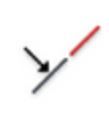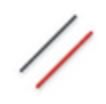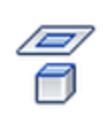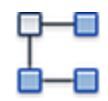![]()
![]()
![]()
Use LEFT and RIGHT arrow keys to navigate between flashcards;
Use UP and DOWN arrow keys to flip the card;
H to show hint;
A reads text to speech;
14 Cards in this Set
- Front
- Back

Coincident |
A geometric constraint that constrains two points together or constrains one point to a curve. When this constraint is applied to the center points of two circles, arcs, or ellipses, the result is the same as the concentric constraint |
|

Collinear |
A geometric constraint that causes two or more line segments or ellipse axes to lie along the same line. In an assembly, a collinear constraint is achieved with a mate constraint between two lines, edges, or axes
|
|

Concentric |
A geometric constraint that causes two circles, arcs, or ellipses to have the same center point. The result is the same as that of a coincident constraint applied to the centers of the curves.
|
|

Fix |
Causes points and curves to be placed in a stable position relative to the sketch coordinate system. If the sketch coordinate system moves or rotates, fixed curves or points move or rotate with it.
|
|

Perpendicular |
Causes selected linear geometry to lie at right angles to each other. Linear geometry includes lines, ellipse axes, spline handles, text edges, and imported images
|
|

Tangent |
Causes curves, including ends of a spline, to be tangent to other curves. One curve can be tangent to another even if they do not physically share a point.
|
|

Horizontal |
Causes selected linear geometry or pairs of points to lie parallel to the X axis of the sketch coordinate system. In addition to lines and pairs of points, this includes ellipse axes, spline handles, text edges, and imported images.
|
|

Parallel |
Causes selected linear geometry to lie parallel to each other. In addition to lines, this includes ellipse axes, spline handles, text edges, and imported images. In a 3D sketch, the parallel constraint is parallel to X, Y, or Z part axes unless you manually constrain to selected geometry.
|
|

Equal |
Causes selected arcs and circles to resize to the same radius or selected lines to resize to the same length
|
|

Vertical |
Causes selected linear geometry or pairs of points to lie parallel to the Y axis of the coordinate system. In addition to lines or pairs of points, this includes ellipse axes, spline handles, text edges, and imported images.
|
|

Smooth |
Causes a continuous curvature between a spline and another line, arc, or spline.
|
|

Symmetric |
Causes selected lines or curves to become proportionally constrained around a selected line. Segments constrained to the selected geometry also reorient when the constraint is applied.
|
|

Reference |
Indicates an associative relationship between projected geometry and the geometry from which it was projected.
|
|

Pattern |
Indicates sketch geometry that is associated with Rectangular Pattern or Circular Pattern.
|

